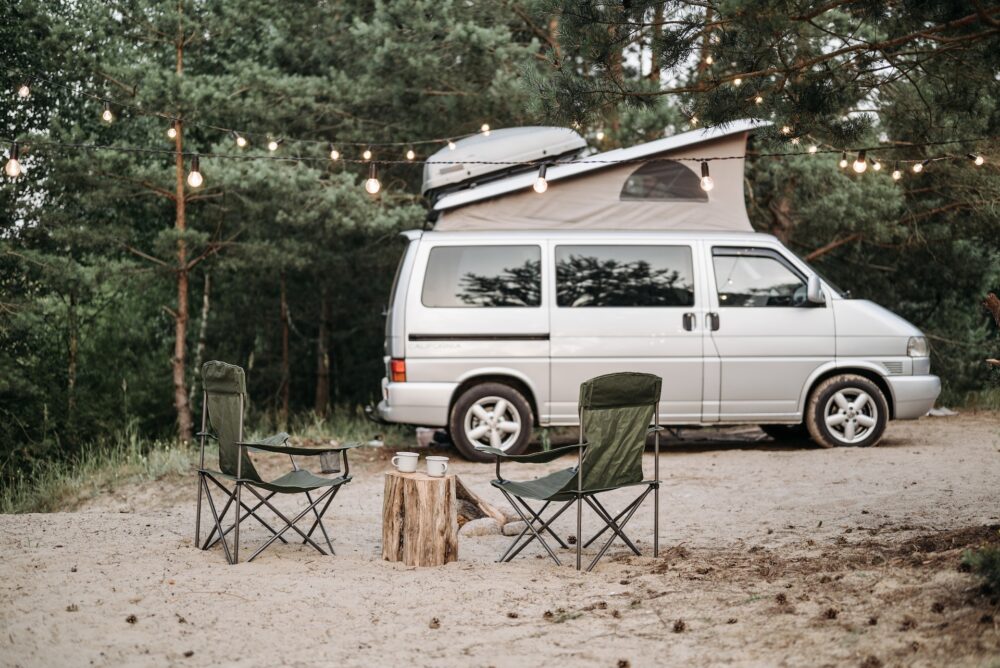Even though you’re a nomad who wants to travel the world, you still need a place to live. Unless your seasonal job comes with a room or you want to couch surf, you’ll have to find accommodations in the places you’re planning to visit. Some nomads live out of Airbnbs or hostels, while others opt to purchase a mobile dwelling like a van or RV that they can take with them on their journey. Here are some factors to consider as you’re sorting through your housing options and trying to decide which one is right for you.
Think About What You Want Out of Nomadic Life
We all want different things from our nomadic lifestyles. When choosing a place to live, you’ll have to ask yourself what your priorities and needs are. Are you looking for the cheapest accommodations to save money, or do you want to prioritize creature comforts while you’re on the road?
It’s important to be honest with yourself. If you know you’ll feel claustrophobic and miserable in a tight space, an Airbnb will probably work out better for you than a van or tiny home, even if it costs more. If you don’t enjoy living in community with others, you might not like staying at a hostel.
Prioritize finding a sustainable living situation that you think you’ll be happy with months or years down the road. You don’t want less-than-ideal accommodations to turn you off of the nomad lifestyle and force you to stop traveling prematurely.
RV
One of the most common mobile residences is an RV and for good reason. They’re easy to find for sale, have many different layouts and price points, and you can usually find one that’s the perfect size for the car you already have. Even the average sedan can tow an ultralight teardrop-style RV, which only costs a few thousand dollars.
If you have a truck and aren’t comfortable with towing a full trailer, a truck camper that fits right in the truck bed can be a great option as well. While there are lots of different layouts, make sure you pick one you’ll be really happy with as it is difficult and costly to change an RV’s design.
Possibly the best part of an RV is the ability to disconnect it. Once you get to your destination, it’s easy to unhook your trailer and resume normal use of your car for sightseeing and getting around.
Pros
- Lots of options and different price points
- Separation of car and home
Cons
- Not as customizable as a van conversion or tiny home
Van Conversion
If you’re handy, a van conversion may be perfect for you. A van conversion allows you to spend as much or as little as you like to make your van into a home. You can put in a lot of sweat equity and only spend a few thousand dollars on materials, or leave your van conversion to a professional (which will likely cost $30,000 at minimum).
Van conversions are a great option for those not wanting to deal with the hassle of towing a trailer. It’s important to remember though, if your van ever breaks down, so does your home. So you may need to set aside some extra emergency savings, which will allow you to stay in a hotel until your van gets fixed.
Another huge benefit of a van conversion is security. If you’re ever in a situation you don’t like, you’ll be able to go from your living space right to the driver’s seat without having to exit the vehicle. As long as you cover the back windows, passersby won’t be able to tell that you’re living in your van, so you may be less of a target for thieves. Plus, the fact that van conversions are inconspicuous gives you the flexibility to “stealth camp” and park in a wider variety of places than you could in an RV or tiny home.
Pros
- DIY
- Budget-friendly
- No towing
- Safety
Cons
- Breakdowns leave you without a home
Tiny Home
If you love the idea of having a more traditional home but don’t want to give up on travel, a tiny home is a fantastic option. A tiny home can give you all of the comforts of a stick-built home without locking you into one place. However, moving a tiny home takes a lot more planning than towing an RV and requires a large truck made for heavy loads, such as a U-Haul box truck. Depending on the height of your RV, there may be some roads that you can’t take it on.
And if your tiny home is especially wide, you may need a special wide-load permit in order to tow it on public roads. As a result of these logistical challenges, tiny homes are more stationary than vans and RVs and are more suited for slow travel where you stay in one location for several months.
You can find tiny homes pre-built, commission one to be built to your specs, or even build it yourself to save money. New, pre-built tiny homes can cost upwards of $50,000, but you could build a DIY tiny home for as little as $10,000. Since tiny homes are built similarly to stick-built houses, if you’ve done DIY renovation projects or home maintenance, a tiny home build should be within your wheelhouse.
If you eventually decide to stop your travels, you can find a place to set your tiny home on a more permanent basis. Whether you’re planning to rent or buy land, look for options with septic, water, and electric. Having these installed on the land will give you all of the comforts of a full house that you may have missed while on the road.
Pros
- Stick-built
- Buy or DIY
- Customizable
Cons
- Requires a heavy duty truck to move
- More stationary and suited to slow travel
Airbnb
Finally, if the idea of having to haul your home with you everywhere you go is overwhelming or you plan to travel abroad, Airbnb may be the perfect solution. Even if you love the idea of van life, planning overseas travel can be difficult. Shipping your van is expensive and the alternative of selling and starting anew in your next destination can be an even bigger hassle.
Hopping from one Airbnb to the next can be a great option that allows you to travel to all the places on your bucket list without losing out on any creature comforts. Most areas open to RV or tiny home parking will be further out of town or even rural and have limits on how long you can stay.
But with an Airbnb, you can choose to stay in the heart of downtown, the suburbs, or on the outskirts and find short-term or long-term rentals. Airbnb has bookings available for a month or more if you really want to take advantage of slow travel. If spontaneity is more your style, bookings can be made the day before and ready by the time your plane lands.
The main downside of staying in Airbnbs is that it can be costly. The average nightly rate for an Airbnb globally was $137 per night in 2021. However, keep in mind that costs will likely vary based on location, time of year, and demand. You can always travel to cheaper destinations that are popular with digital nomads and expats, such as Mexico and Thailand. Traveling to popular destinations during their off-season can also help you save money. You may even get a bulk discount if you book an Airbnb for a month or more.
Pros
- Flexibility
- Amenities
- Location
Cons
- Cost
Where do you like to stay as a traveling nomad? Share your thoughts in the comments below!
Read More
5 High-Paying Side Hustles in Atlanta
4 Exciting Seasonal Jobs For Adventurous Nomads
The Pros and Cons of Quitting College To Pursue Business

Vicky Monroe is a freelance personal finance and lifestyle writer. When she’s not busy writing about her favorite money saving hacks or tinkering with her budget spreadsheets, she likes to travel, garden, and cook healthy vegetarian meals.
